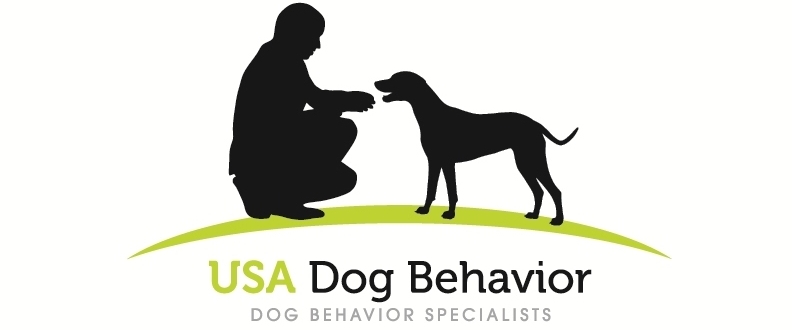13 Ways You Can Exercise Your Dog This Summer (Indoors and Outdoors)
Average Reading Time: 3 minutes, 29 seconds
© Scott Sheaffer, CBCC-KA, CDBC, CPDT-KA, USA Dog Behavior, LLC
Want to learn more about dog aggression?
Tune into my weekly podcast on dog aggression, Dog Aggression Answers.
Summer is around the corner and it’s going to be hot, especially here in Texas! There’s no excuse not to mentally and physically exercise your dog every day, even when it’s really hot outside. I’ve provided 13 ways you can exercise your dog below; most of them can be done inside.
1. Food Dispensing Toys (inside exercise) - Food dispensing toys are invaluable boredom busters. Rubber Kongs can be stuffed with a great variety of treats and food, but there are other options available too: Nina Ottosson, Aikiou, PetSafe Kibble Nibble, Kyjen plastic games/puzzles, PetSafe Busy Buddy, Orbee Treat Spot, PetSafe Tug-a-Jug and Buster Cubes.
2. Kibble Hunt (inside exercise) - If you place your dog's mealtime kibble in a food bowl, chances are the bowl will be emptied very quickly. You can put that food to work for you by making your dog hunt for it with their nose. Instead of dumping the food in their bowl, consider hiding small piles of food around the house, then release them to find the hidden treasure piles. Initially, make the piles very easy to find. As your dog gets better at this game, practice hiding the food in more difficult spots and at greater distances.
3. Tug and Fetch (inside exercise) - Tug and fetch are classic dog games that do not require a lot of room. Hallways tend to be great for fetch games, and tug can be played virtually anywhere.
4. Doggie Play Date (outside exercise) - If your dog has a favorite playmate or friend (i.e., dog or human), consider regularly scheduled play dates. This benefits your dog and their playmate.
5. New Friends Outing (inside exercise) - If you are unable to take your dog for a walk, consider taking them for a ride and visiting Home Depot, Lowe’s (they both allow dogs inside their stores) or any large pet supply store like PetSmart, Petco, or Pet Supplies Plus. Be sure your dog is on leash and carry some treats to reward them for good behavior. If your dog has any aggression issues whatsoever, please completely avoid this exercise.
6. Play Hide and Seek (inside exercise) - Hide and seek is a great way to exercise your dog's mind and body - and it can be done inside. Stock up on great treats and hide in the house while the dog is not looking. When you are ready, say “find me” and generously reward your dog when you are found. This is one of my favorite exercises to do with my dogs.
7. Dog Treadmill (inside exercise) – Whether it’s a human treadmill or one specifically designed for dogs (yes, they make these), dogs can be taught to run on a treadmill fairly quickly. Get a competent and experienced dog trainer who knows how to do this to teach you and your dog. Never leave a dog unattended while on a treadmill.
8. Walking (outside exercise) – It’s hard to beat the old standby of walking your dog. Thirty minutes a day of walking your dog is stimulating for them.
9. Running (outside exercise) – If your breed of dog is one that can tolerate running (e.g., non-brachycephalic), this can be a great form of exercise for your dog. Two cautionary notes: 1) Dogs less than about one year of age shouldn’t engage in running because of their incomplete orthopedic development (always check with your veterinarian first), and, 2) Dogs of any age can have physical problems running for sustained periods; dogs are built for sprinting, not for long distances like humans. If you want to run with your dog for extended distances, always check with your veterinarian first.
10. Swimming (outside exercise) – Many dogs love to swim. This can be a good exercise for dogs with orthopedic issues too. Never leave your dog unattended while they are swimming. Watch for signs of exhaustion or other distress issues. Never leave them in the water for too long.
11. Blowing Bubbles (inside or outside exercise) – Most dogs go crazy trying to bite the bubbles blown from a child’s bubble blowing toy. I think this is as entertaining for the human blowing the bubbles as it is for the dog.
12. Cue Review (inside or outside exercise) – How about a 15-minute review of all the cues (i.e., commands) you’ve taught your dog (e.g., sit, stay, down, come, leave-it, drop-it, etc.)? You can teach them new cues too. Be careful not to have sessions longer than about 5 - 10 minutes; their attention span is not as long as humans. If you want to do more than 15 minutes, split things into multiple sessions.
13. Stair Work (inside or outside exercise) – At the top of a set of stairs, put your dog in a stay and throw a ball down the stairs. Release the dog and have them fetch the ball and bring it back to you. This is an exercise for healthy dogs, as it can be quite demanding.


